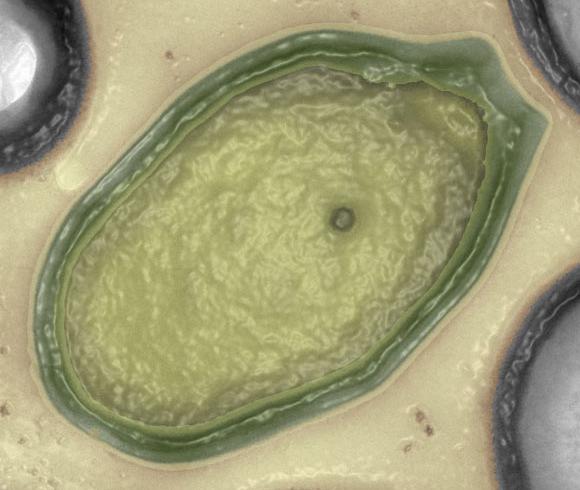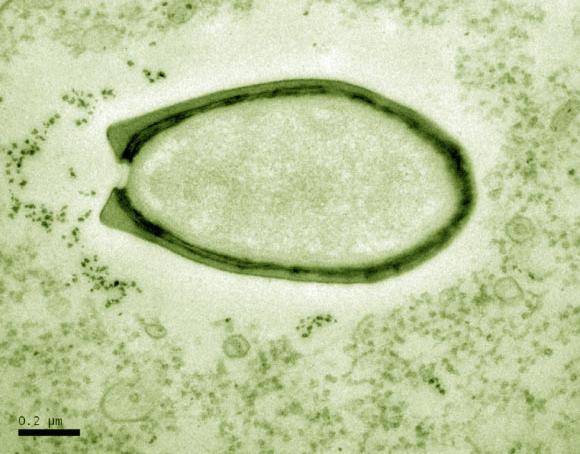Meet Pandoravirus! Scientists Surprised to Discover New Giant Viruses

Virologists led by Prof Jean-Michel Claverie and Dr Chantal Abergel from the Aix-Marseille Université’s Structural and Genomic Information Laboratory, France, have described two new giant viruses, the biggest yet found.
The new viruses, named Pandoravirus salinus and Pandoravirus dulcis, are twice as large as the previous record-holder Megavirus chilensis.
In addition to being huge – about 1 μm in length and 0.5 μm in diameter, these viruses have enormous genome sizes.
The genome of Pandoravirus salinus is 2,473,870 DNA bases long, while Pandoravirus dulcis runs 1,908,524 bases.
“The amphora-like shape of the pandoraviruses and their unique genomic content made us associate them with the Pandora box. The opening of the box will definitively break the foundations of what we thought viruses were,” explained Dr Abergel, who with colleagues described the new viruses in a paper published in the journal Science.
Pandoravirus salinus was found in a sediment sample collected off the coast of central Chile. The other viral giant, Pandoravirus dulcis, was collected from a shallow freshwater pond near Melbourne, Australia.
“The fact that two of them were found almost simultaneously from very distant locations either indicates that we were incredibly lucky, or that they are not rare,” Dr Abergel said.
“One explanation for their late discovery would be that they are only found in sediments, an environment that has not been well explored, and that is also difficult to work with. As far as we know, this is the first recovery of viruses from sediments.”
Dr Abergel said so far as they know, the pandoraviruses are not pathogenic to humans, but they can parasitize amoebas. “This does not mean that some viruses related to these new viruses might not be the unsuspected cause of unrecognized infectious diseases.”

Pandoravirus dulcis
Using light and electron microscopy, the scientists followed Pandoravirus salinus and Pandoravirus dulcis through a replication cycle in Acanthamoeba to confirm their viral nature.
The team then sequenced their genomes and found several striking features that distinguish them from other known viruses.
Dr Abergel emphasized that “the genes of these new viruses might point to alternative metabolic pathways that might revolutionize the biotech and pharmaceutical industry.”
“Because more than 93 per cent of pandoraviruses genes resemble nothing known, their origin cannot be traced back to any known cellular lineage. However, their DNA polymerase does cluster with those of other giant DNA viruses, suggesting the controversial existence of a fourth domain of life,” the virologists wrote in the Science paper.
They noted that the discovery of the pandoraviruses is “a reminder that our census of the microbial diversity is far from comprehensive and that some important clues about the fundamental nature of the relationship between the viral and the cellular world might still lie within unexplored environments.”
Оставить комментарий
Для комментирования необходимо войти через
![]() Вконтакте
Вконтакте